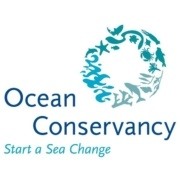What’s the deal with the Plastic Soup again?
March 15 2024 That’s what readers of news site nu.nl on their comment platform Nujij were wondering. In a recent […]
2 August 2022
Scientists have succeeded in measuring nanoparticles in the sea and determining their weight. To do this, researchers at Utrecht University and the NIOZ (Royal Netherlands Institute for Sea Research) used a new measuring method. They calculated that there are 25 tonnes of minute particles, primarily polystyrene, floating around the Wadden Sea. They point out the hazards of this for life in the sea.
The article was published in Science of The Total Environment and an abstract is available on Utrecht University’s website.
The nanoplastics (smaller than 1 micrometer) are so light that they float in the water column. The particles that ultimately land on the seabed are repeatedly stirred up into the water column by the current. They thus touch all the organisms that live in the Wadden Sea. The concentration that the researchers found is ten thousand times lower than the concentrations that are used in laboratories to examine the effects of plastic on marine life. This suggests that nanoplastics in seawater have no or minimal effects.
However, the researchers point to tests with similar small concentrations. These studies do show demonstrable negative effects such as the reduction in the swimming speed of algae and rotifers. This implies that the current concentrations of nanoplastics in the sea can negatively impact marine life. What we do know is that this concentration only increase over time as larger pieces of plastic continue to fragment. Plastic particles that are transported in the wind continue to land in the sea.
The researchers claim that their research contributes to finding the solution to a well-known mystery related to the plastic soup. There is a lot less plastic found in the ocean than could be expected from calculations. Current methods used to measure this are based on nets that are dragged through the water. But even the finest mesh of these nets is too big to capture the smallest microplastics and nanoplastics. They literally slip through the mesh and are thus not included in the calculations. Another limitation of the dragnet method is that only floating plastic in the top layer of water is assessed. You do not know how much plastic lies on the seabed, floats in the water column, or has been swallowed by marine animals.
The Utrecht University and NIOZ research shows that a substantial proportion of the ‘disappeared’ plastic is floating around as nanoparticles. If this is happening in the Wadden Sea, it is also happening in all seas around the world.
Photo: NIOZ/UU
You may also be interested in:
Scientific bundle on plastic nanofibers and microfibers
March 15 2024 That’s what readers of news site nu.nl on their comment platform Nujij were wondering. In a recent […]
The first Impact Fair is Europe’s largest Impact Experience. An interactive ‘immersive’ experience of impactful examples.
The waste-export to countries outside of the EU has been restricted The Netherlands is against a carpet ban on shipping of plastic waste.
The waste-export to countries outside of the EU has been restricted The Netherlands is against a carpet ban on shipping of plastic waste.

 Many promises made by corporations are just blah-blah
Many promises made by corporations are just blah-blah